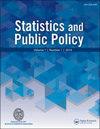统计学家从事枪支暴力研究
IF 1.5
Q2 SOCIAL SCIENCES, MATHEMATICAL METHODS
引用次数: 0
摘要
摘要政府报告记录了2017年14000多起凶杀案和195000多起持枪严重袭击案。此外,还发生了346起大规模枪击事件,4名或4名以上受害者,其中2000多人被枪杀。这些统计数据不包括自杀(占枪支死亡人数的三分之二)或事故(占枪支死亡率的5%)。这篇文章描述了在一个国家论坛上讨论的统计问题,以促进统计学家和犯罪学家之间的合作。主题包括:(i)现有的数据来源及其缺点和提高质量的努力,以及枪击事件的替代新数据登记册;二枪支暴力的模式和趋势,以及城市地区的统计模型和聚集效应;三研究如何理解预防枪支暴力的有效战略以及警察在解决枪支凶杀案中的作用;(iv)可靠的法医学在解决枪击案中的作用;以及(v)警察枪击案的主题,枪击案在哪里更为普遍,以及涉案警察的特点。最后一节呼吁统计界与社会科学家合作,为理解和缓解枪支暴力的社会问题提供最有效的方法工具。本文章由计算机程序翻译,如有差异,请以英文原文为准。
Statisticians Engage in Gun Violence Research
Abstract Government reports document more than 14,000 homicides and more than 195,000 aggravated assaults with firearms in 2017. In addition, there were 346 mass shootings, with 4 or more victims, including over 2000 people shot. These statistics do not include suicides (two-thirds of gun deaths) or accidents (5% of gun deaths). This article describes statistical issues discussed at a national forum to stimulate collaboration between statisticians and criminologists. Topics include: (i) available data sources and their shortcomings and efforts to improve the quality, and alternative new data registers of shootings; (ii) gun violence patterns and trends, with statistical models and clustering effects in urban areas; (iii) research for understanding effective strategies for gun violence prevention and the role of the police in solving gun homicides; (iv) the role of reliable forensic science in solving cases involving shootings; and (v) the topic of police shootings, where they are more prevalent and the characteristics of the officers involved. The final section calls the statistical community to engage in collaborations with social scientists to provide the most effective methodological tools for understanding and mitigating the societal problem of gun violence.
求助全文
通过发布文献求助,成功后即可免费获取论文全文。
去求助
来源期刊

Statistics and Public Policy
SOCIAL SCIENCES, MATHEMATICAL METHODS-
CiteScore
3.20
自引率
6.20%
发文量
13
审稿时长
32 weeks
 求助内容:
求助内容: 应助结果提醒方式:
应助结果提醒方式:


